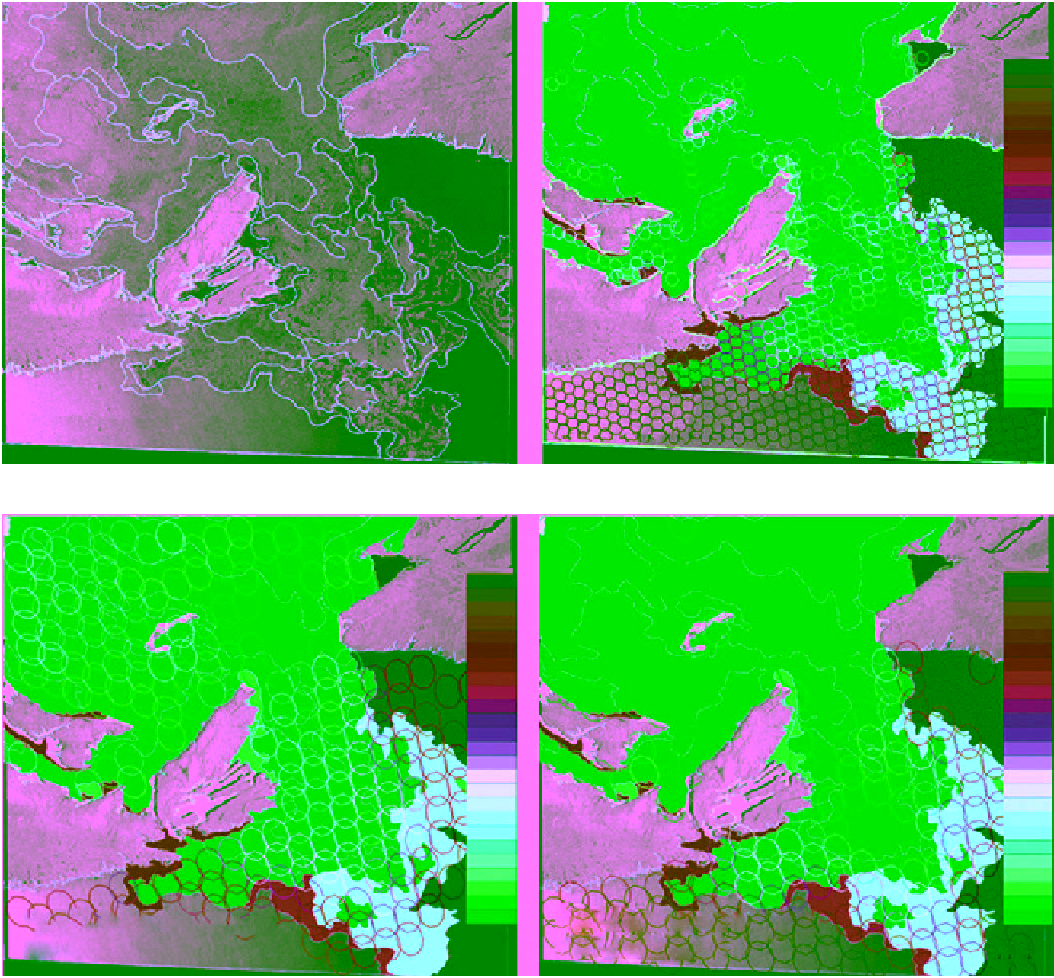Geology Reference
In-Depth Information
(a)
(b)
Gulf of St. Lawrence
4.00
8.00
12.00
16.00
20.00
24.00
28.00
32.00
36.00
40.00
44.00
48.00
52.00
56.00
60.00
64.00
68.00
72.00
76.00
80.00
84.00
88.00
92.00
96.00
100.00
Nova Scotia
Total ice concentration
from ECICE-85
Atlantic Ocean
(c)
(d)
4.00
8.00
12.00
16.00
20.00
24.00
28.00
32.00
36.00
40.00
44.00
48.00
52.00
56.00
60.00
64.00
68.00
72.00
76.00
80.00
84.00
88.00
92.00
96.00
100.00
4.00
8.00
12.00
16.00
20.00
24.00
28.00
32.00
36.00
40.00
44.00
48.00
52.00
56.00
60.00
64.00
68.00
72.00
76.00
80.00
84.00
88.00
92.00
96.00
100.00
Total ice concentration
from NT2
Total ice concentration
from ECICE-37
Figure 10.21
Radarsat‐1 images acquired on 18 March 2003 with (a) delineated CIS IAPs boundaries and (b)-(d)
the results from calculated total ice concentration from ECICE using SSM/I 85 GHz observations, NT2, and SSM/I
37 GHz observations. The ellipses represent the footprints from SSM/I 85 GHz in (b) and 37 GHz channel in (c)
and (d). Colors of footprints represent total ice concentration from ECICE and colors of polygons represent total
ice concentration from CIS Radarsat image analysis. (For color detail, please see color plate section).
designated information of the polygon. This theme is
illustrated in Figure 10.22. A single analysis polygon is
shown in the top left panel overlaid on the Radarsat‐1
image. The egg code (see explanation in section 11.2)
and the acquisition times of Radarsat‐1 and SSM/I are
shown in the top right panel. The rest of the panels show
the ice concentrations output from ECICE: total ice, new
ice (NI), YI (including gray and gray‐white ice), and FY
ice. In this example observations from the 85 GHz
channels (
T
b
,85
h
, T
b
,85
v
, and PR
85
) were input to ECICE.
The entire polygon is assigned a total concentration of
9+ (i.e., nearly but not exactly 100%). This designation is
common in the CIS charts in order to allow for possible
small openings between ice floes. This total concentra-
tion is divided among the ice types shown by the egg
code: one‐tenth of FY ice thick (code 4), four‐tenths of

